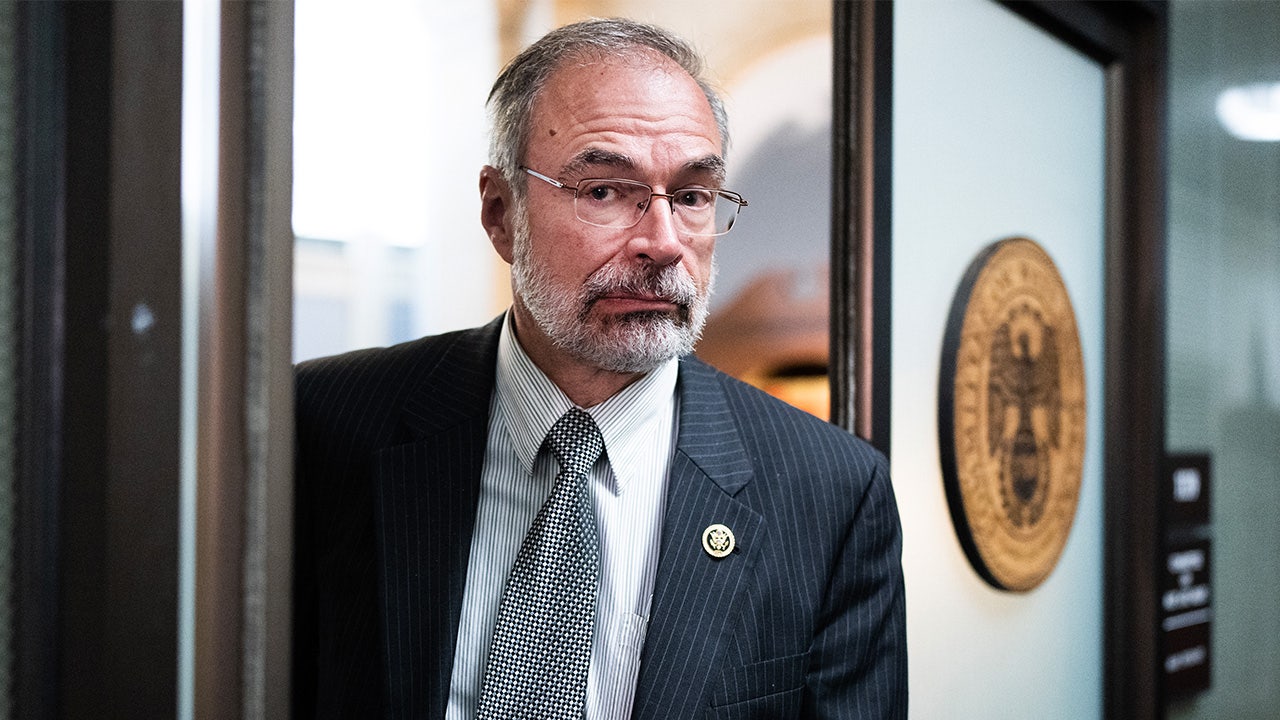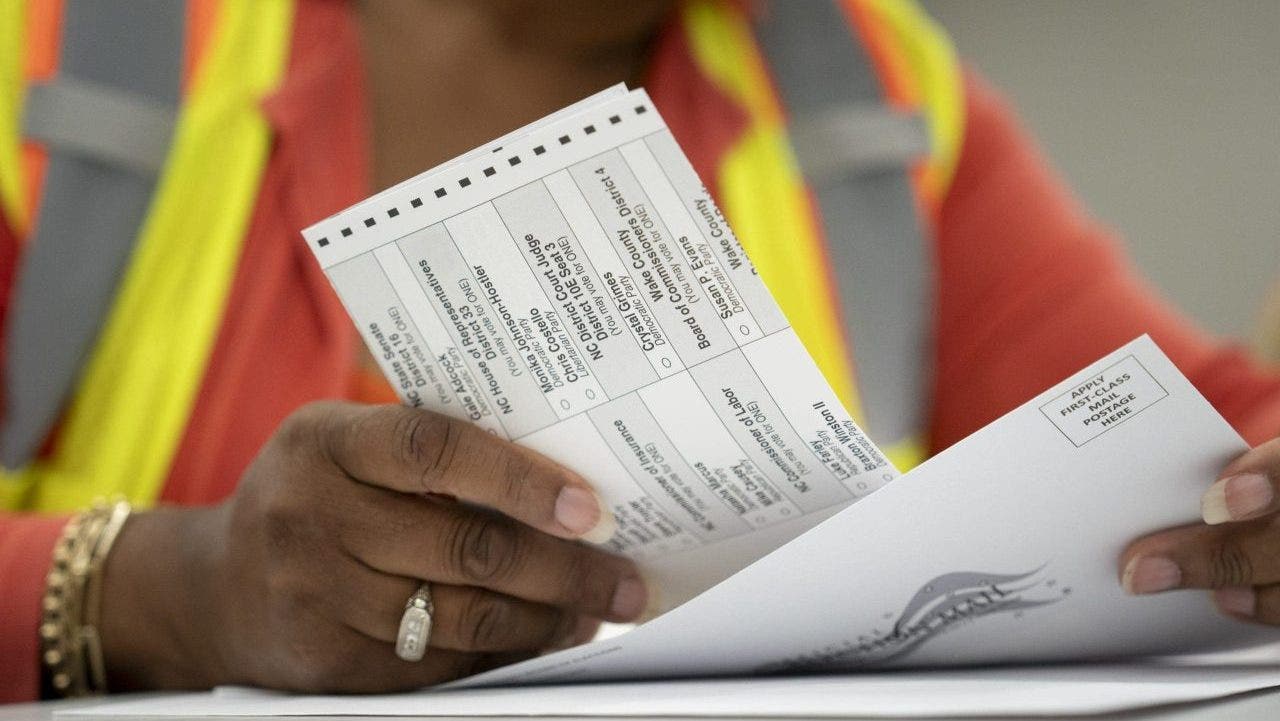Oregon
Fighting for Anthony: The Struggle to Save Portland, Oregon

Come to Portland, his sister said. It’s green and beautiful, people are friendly and there are plenty of jobs.
In 2018, Anthony Saldana took his sister’s advice. He left Las Vegas, where he was working in a casino, and moved to a Portland suburb.
He rented an apartment and got a job at Home Depot. Mr. Saldana, though, never quite found his footing. By early 2021, he was living in a tent, under a tree on the edge of a highway in Portland.
He wouldn’t let his sister, Kaythryn Richardson, visit him and shared only a few details with her about his life on the streets. He told her about the “bad people’‘ terrorizing him and about the Disney movies he had watched to drown out the chaos that was slowly pulling him under.
“Hello sister,” he texted last October. “I’m hurting.”
All of Portland, it seems, has been trying to figure out what has been happening to people like Mr. Saldana, and to Portland itself.
This city of 635,000, home to the world’s largest bookstore and majestic views of snowcapped Mount Hood, has long grappled with homelessness. But during the pandemic this perennial problem turned into an especially desperate and sometimes deadly crisis that is dividing Portland over how to fix it.
While other cities in the West, like San Diego and Phoenix, face similar issues, the suffering on Portland’s streets has dealt a singular challenge to the city’s identity as a liberal bastion that prides itself on embracing transplants from across the country.
In 2022, Portland experienced a spate of homicides and other violence involving homeless victims that rattled many in the community: a 42-year-old homeless woman shot in the face by two teenagers who were hunting rats with a pellet gun; a 26-year-old homeless woman stabbed in the chest outside her tent; another homeless woman, 31, fatally shot at close range by a stranger.
The search for answers points in many directions — to city and county officials who allowed tents on the streets because the government had little to offer in the way of housing, to Oregon voters who backed decriminalizing hard drugs and to the unrest that rocked Portland in 2020 and left raw scars.
But what has turbocharged the city’s troubles in recent years is fentanyl, the deadly synthetic drug, which has transformed long standing problems into a profound test of the Portland ethos.
Outreach workers in Portland say rampant fentanyl use, has coincided with the increasing turmoil among many homeless residents.
Doctors who care for people living on the streets say fentanyl addiction is proving harder to treat than many other dependencies.
Yet, as they have for years, legions of volunteers — professionals, recovering addicts and anarchists — routinely hand out sandwiches, wound kits and clementines around the encampments. Those volunteers include people like Jakob Hollenbeck, 23, who last year befriended a group camped out across the street from his house in Portland’s upscale Pearl District.
One of the tent dwellers was Mr. Saldana.
Mr. Hollenbeck, a recent college graduate, tried to help Mr. Saldana, 54, get back on his feet by giving him food, money and camping supplies.
And as he learned the roots of Mr. Saldana’s struggles, Mr. Hollenbeck became even more determined to help him.
“We are failing our unhoused neighbors every day,” Mr. Hollenbeck said. “And it’s something we can fix.”
‘Everything Just Seemed To Work’
Josh Alpert had a similar can-do attitude when he moved to Portland in the 1990s.
Mr. Alpert found an intense sense of community and “pride of place” among the many other transplants he met there.
“There was a sense that we are this Western city marching to our own drummer,” said Mr. Alpert, who grew up in Pittsburgh and, after coming to Portland, quickly decided he wanted to go into government.
This vibrant civic life played out while the city’s economy was growing and tourists were flocking to landmarks like Powell’s City of Books, the nation’s largest free-standing bookstore.
“Everything just seemed to work,” said Mr. Alpert, who worked for former Mayor Charlie Hales, from 2013 to 2016, including as his chief of staff.
Then came the tents.
At first, many were concentrated downtown and a few others were scattered across the city. Some of the early tent dwellers arrived with the Occupy movement in 2011, which involved camping in public spaces across the United States to protest income inequality.
“Occupy sent the message to the houseless that it’s OK to come out of the corners and be visible,” Mr. Alpert said.
The protests ended, but Mr. Alpert said many of the Occupy activists stayed in tents “because they had nowhere to go.”
The city’s popularity as a destination for transplants was helping to push rents beyond the reach of people who lacked a financial safety net, and forcing some of them onto the streets.
As the city’s point person on homelessness, Mr. Alpert supported new approaches to the housing shortage like the creation of temporary “villages” that could be run by homeless people themselves.
Instead of tents spread throughout the city, the villages, with names like Hazelnut Grove, were meant to be self-governing communities that empowered their residents.
“There was such a vital energy in the houseless community back then,” said Vahid Brown, who has worked with the homeless population for many years and was involved in the “village movement.”
Today, there are an estimated 6,300 homeless people in Multnomah County, which includes Portland. Only a relatively small number of them are still living in the homeless-run villages. Many live in tents under bridges, behind a hospital and in pine-scented groves. Some have fire pits. One has an American flag out front. A wheelchair. A library. A dead rat.
Mr. Alpert, who left government in 2016, says he has been blamed for allowing the tents to spread early on. “I wrestle even still with whether it was fair or unfair criticism,” he said.
Within a few years, the tents became more entrenched. In 2018, the federal appeals court that covers Oregon and much of the West ruled that cities could not prohibit people from sleeping outside if an alternative shelter wasn’t available.
Mr. Alpert still lives in Portland and likes to take long walks around the city. Over the past two years, he has seen at least 10 people overdosing, and has encountered a man walking around downtown naked and screaming.
“This is not the same issue that we were fighting,” he said. “This is something different.”
‘Love You, Sis’
When Anthony Saldana arrived in the city in 2018, he first rented his own place and then bunked with his sister and her partner, Phillip.
But Mr. Saldana just couldn’t make it work. As the pandemic wore into 2021, Mr. Saldana left his sister’s house and started sleeping outside.
He returned regularly for “Anthony Day” — Ms. Richardson’s day off from her job at a local grocery store. She served him meat lover’s pizza, while he did his laundry and took a shower.
In the morning, Mr. Saldana headed back to his tent.
He would say goodbye and leave. No hugs or even a fist bump. His sister said Mr. Saldana didn’t like to be touched.
Mr. Saldana was 4 years old when he went to live with a relative in California, who abused him until he was a teenager, his sister said.
Mr. Saldana was eventually diagnosed with depression, which he often tried to treat with alcohol and meth. While he was working for Home Depot, his sister said, the company gave him time off from work to attend a month of rehab.
Ms. Richardson said her brother wasn’t easy to be around when he was high and paranoid. But they all looked forward to Anthony Day.
“Thanks for dinner, it was awesome,” Mr. Saldana messaged after a visit in September. “Have a wonderful day. Love you sis.”
“You’re welcome,” Ms. Richardson wrote back. “Stay safe. Love you.”
2 Days, 7 Deadly Overdoses
The summer of 2020, after the killing of George Floyd, was a tumultuous time in many American cities, but particularly in Portland.
Protesters clashed with the police in the downtown streets from May through that fall, resulting in more than 1,000 arrests.
Sgt. Jerry Cioeta, of the Portland Police Bureau, worked 71 days with only three days off during the unrest. His hearing was damaged after an explosive thrown by a protester hit him in the hip.
After the street battles ended and Sergeant Cioeta resumed patrols, he soon found himself in a changed city.
In November 2020, amid the national reckoning over policing and criminal justice, Oregon voters by a wide margin approved a ballot measure that lowered the penalties for possessing small amounts of drugs like meth and opioids.
While an increasing number of states no longer criminally charge people for using marijuana, Oregon took the bold step of decriminalizing the possession of “hard drugs.”
When the police in Oregon see someone using these drugs, they can hand out a $100 ticket and a card listing a hotline for addiction treatment.
Known as Measure 110, the law was meant to focus the government’s efforts on treating addiction, not on arresting users.
At the same time, it allocated millions of dollars in additional funding for addiction services across Oregon. But the new money was slow to roll out.
Sergeant Cioeta, who oversees a bike squad that patrols downtown Portland, believes Measure 110 is fueling more drug use by sending the false message that “all drugs are legal.”
Others say that drug use has been common in Portland for decades and that Measure 110 has only brought the problem more out into the open.
Fentanyl was not a major focus of the discussions around decriminalization because it was not as widely used as it is now.
In 2020, the year voters approved the measure, 69 people in Multnomah County fatally overdosed from synthetic opioids, mainly fentanyl, according to the county health department.
Last year, such overdoses killed 209 people in the county, and the drug is smoked openly on Portland’s downtown streets.
Fifty times more powerful than heroin, fentanyl sets off a high that “human brains have never seen before,” said Dr. Andy Mendenhall, who runs Central City Concern, one of Portland’s largest nonprofit providers of mental health and homeless services.
“It makes it harder for folks to stay in recovery,” he said at a locally televised forum about addiction.
Fentanyl is often being used with other drugs, such as a synthetic form of meth, which outreach workers and the police say is also contributing to the increasingly volatile behavior on the streets.
Amid an outcry over Measure 110, the Oregon House recently passed a bill that would create stiffer consequences for possession of certain amounts of fentanyl.
Over two days in mid-May, seven people died of overdoses across Portland. One person died in a car, another in a tent and a third in a grassy area, three blocks from Powell’s City of Books.
‘He Wanted Me To Know’
When Jakob Hollenbeck graduated from the University of Oregon last year and moved to the Pearl District, a neighborhood of loft apartments and nice restaurants, he was keenly aware of Portland’s troubles.
Mr. Hollenbeck wasn’t afraid of the crime or homelessness, but he was upset with how the city was dealing with these issues.
Under Mayor Ted Wheeler, a Democrat, the city had been steadily stepping up the removal of tents and trying to move people into shelters.
But many of the people being displaced simply packed up their belongings and moved their tents to another patch of sidewalk.
Recognizing that many people struggling with addiction and mental illness do not want to live in a shelter, the Wheeler administration is developing several large encampment sites that will house people in “pods,” small basic structures with heating and air-conditioning units.
These pod clusters are different from many of the villages that sprung up a decade ago, because government contractors will supervise them.
“There is nothing humane about living outside in the elements, and I have sought to change that,” Mr. Wheeler said in an interview.
Preliminary results from a recent survey show that while the number of people who are homeless has risen, the portion who have been homeless for extended periods fell this year; officials said more people were also using shelters this year.
Mr. Hollenbeck, who is a believer in progressive approaches, said the city can only truly solve the problem by providing more affordable housing and mental health services. In the meantime, he said, citizens needed to step in to help their neighbors.
Mr. Hollenbeck raised $3,000 on GoFundMe to buy his neighbors camping supplies, and he borrowed his parents’ car to help Mr. Saldana relocate after his tent was taken down.
When Mr. Hollenbeck, a paralegal, learned that Mr. Saldana had been hit by a car, he helped prepare a lawsuit against the company that had insured the car involved in the accident.
Then, Mr. Saldana returned the favor.
One night last December, Mr. Hollenbeck was walking home with takeout when a man approached him and demanded his food. When Mr. Hollenbeck refused, the man brandished a shard of glass and said he was going to stab him.
Mr. Saldana and another man bounded out of their tents and stood between Mr. Hollenbeck and the man with the shard, who was also homeless. Mr. Saldana yelled at the man to leave, which he did.
“I don’t know what would have happened to me if he hadn’t done that,” said Mr. Hollenbeck, who was interviewed by local news outlets about Mr. Saldana’s courageous act.
A few weeks after the incident, Mr. Saldana told Mr. Hollenbeck about the abuse that he had suffered as a child and how it had shaped his life.
“He wanted me to know that’s why he lived on the street,” Mr. Hollenbeck recalled. “But he said he couldn’t do it much longer.”
‘People Act Like There’s Not Enough’
Just as Portland has attracted college-educated transplants, it has also offered respite to people from around the country who are living on the margins.
Kaetly and Irida Wren were unemployed and sleeping in their car in Memphis in the spring of 2021. Shunned by certain family members, the transgender couple saw few options in the South.
“Let’s go to Portland,” Kaetly remembers saying.
Kaetly, 21, was inspired by the city’s protests. An opioid user, she also heard that heroin was plentiful in Portland. Irida, 26, was told the city offered generous homeless services.
The couple packed up their Nissan Altima and made the 2,200-mile drive. They found support from social workers and groups like Street Roots, which publishes a newspaper focused on homeless issues.
On many nights, they stayed in shelters, but they said camping on the streets was easier.
Government data and interviews with homeless residents underscore Portland’s lure, far and wide. A Houston woman whose home was destroyed by Hurricane Harvey. A New Jersey activist who came for the Occupy protests more than a decade ago. A St. Louis woman who had been sexually abused by a relative.
The couple had hoped to find a sense of community in the encampments.
Instead, they encountered “infighting,” which they attributed partly to fentanyl.
The pull of the drug is so strong that many users are paranoid that supplies are running out, Kaetly said.
“People act like there is not enough of it on the streets for all of us. When in reality, there is more of it on the streets than there ever has been,” she said.
On the night of April 18, the couple were in their tent across from a church when a man slashed the side of the tent and attacked Irida with a knife.
She was stabbed six times in the torso and hands, according to the police report, and was “fainting” shortly after officers arrived on the scene.
They planned to head back to Tennessee last month. Portland “is definitely not what I expected,” Irida said.
Carrots or Sticks?
There are days when Portland is not what Jessie Burke, a co-owner of the Society Hotel, expected, either.
When a woman burst into her hotel lobby and wrestled with two employees. Or when she watched another tent dweller bang her head bloody against a storefront window.
Ms. Burke, who with her husband opened the boutique hotel in the Old Town neighborhood in 2015, believes that Portland can recover but that it needs to adjust its attitudes toward homelessness.
In recent years, she said, the city has been too permissive about camping and people using hard drugs in public places.
“Some people respond to carrots, and some respond to sticks,” Ms. Burke said. “But we have used carrots here.”
She is encouraged by the encampment removals, which have reduced the number of tents in the area around her hotel.
But she said government officials needed to compel more homeless people into mental health and addiction services.
“A lot of people say, ‘How do we get the old Portland back?’” Ms. Burke said. “I think we need to look at the lessons learned from this time and to get to something else.”
Anthony’s Day
While some debate the city’s future, Mr. Hollenbeck has been focused on the immediate needs of his homeless neighbors.
Before leaving for a trip in early March, Mr. Hollenbeck checked in on Mr. Saldana.
You need anything, Anthony?
When there was no answer from inside the tent, Mr. Hollenbeck figured his neighbor was sleeping.
Two weeks later, when Mr. Hollenbeck returned, there was still no sign of Mr. Saldana.
“Haven’t seen you around lately — hope you are good,” Mr. Hollenbeck wrote in an email to Mr. Saldana on April 13.
Five days later, the police received a call about a body found by a worker preparing to remove Mr. Saldana’s tent.
According to a police report, the body had been “unnoticed for several weeks,” and investigators struggled to identify him through fingerprints. Eventually, the police determined it was Mr. Saldana.
He died from a fentanyl overdose, his sister said.
Not long after his friend’s death, Mr. Hollenbeck got word that the insurance company was offering to compensate Mr. Saldana for the injuries he sustained when he was hit by the car.
He would have received $16,600, enough to cover many months of rent.
“The conditions that we have created as a society didn’t let me get that money to him in time,” Mr. Hollenbeck said. “That is something that haunts me.”
Ms. Richardson appreciates what Mr. Hollenbeck did to support and comfort her brother. And she will hold on to the image of her brother standing up to protect his young neighbor.
It was Portland at its best, and proof to her that the city’s ethos of community endures.
But in the end, that wasn’t enough to save her brother from the hurt that followed him wherever he went.
The last time she saw him was on Feb. 26 when he visited her house for an Anthony Day.
He hated having his picture taken, so when she saw him asleep in the living room that day, Ms. Richardson secretly snapped a photo.
He was stretched out on the couch, which was draped in a large blanket patterned like the American flag. His head rested where the stars and stripes came together.
Ms. Richardson posted the image on Facebook after his death. “I love you Anthony,” she wrote. “And know that you are now at peace.”

Oregon
How to Watch Oregon Ducks vs. UCLA Bruins: Channel, Streaming, Preview, Prediction

EUGENE- The No. 8 Oregon Ducks football team is preparing for its upcoming Big Ten conference debut on Saturday, Sept. 28 against a familiar opponent: the UCLA Bruins. The Ducks and Bruins will kick off at 8 p.m. in a late-night game under the lights of the Rose Bowl in Pasadena, California.
The Ducks enter conference play looking to remain undefeated. Oregon improved to 3-0 following a 49-14 win over their in-state rivals, the Oregon State Beavers, in their most recent matchup prior to their bye week.
“Our guys come out here and work every single week,” said Oregon coach Dan Lanning. “Sometimes a bye week can be a lull for teams. I thought our guys have attacked it with the proper approach of finding ways to continue to improve and get better. We talk about having a player-led team. I think that’s really shown up for our guys over the last several weeks, and it’s certainly shown up throughout the season so far.”
How to Watch
No. 8 Oregon (3-0) kicks off at 8 p.m. PT at the Rose Bowl in Pasadena, California. The game is broadcast on FOX.
The game will also be available on streaming services such as Sling TV, FUBO, and YouTube TV.
Preview
Oregon is looking to keep up its momentum as the team heads into the Rose Bowl Saturday night to face UCLA. Various Ducks have been instrumental to Oregon’s success this season. Oregon starting quarterback Dillon Gabriel has thrown for 914 yards and 6 touchdowns on 84 percent passing. Wide receiver Tez Johnson leads the Ducks with 22 receptions for 190 yards and two touchdowns, while tight end Terrance Ferguson has 159 receiving yards as well on the year.
Oregon has struggled on the offensive line, especially with the absence of center Matthew Bedford, who will not be available against UCLA on Saturday, 28th. Despite flaws on the offensive line, other position groups on Oregon’s defense have been successful. Linebacker and dual-sport athlete Bryce Boettcher has a team-high 25 total tackles, while Matayo Uiagalelei has two sacks on the season so far. Oregon’s secondary has also shown strength in Oregon’s non-conference games. Defensive backs Brandon Johnson and Nikko Reed each have an interception on the season, while Washington transfer cornerback Jabbar Muhammed has been able to lock down opponents’ top receivers.
UCLA (1-2), on the other hand, is off to a relatively rough start this season. The Bruins are looking to prove themselves after back-to-back losses, including a 34-17 loss to LSU on Saturday, Sept. 21. However, UCLA’s previous losses are no reason to count them out of this game. Although the Bruins lost to LSU, they managed to stay in the game and walked into halftime tied against one of the nation’s top football powerhouses.
UCLA has managed to cover the spread in seven of its last eight games as an underdog when playing with a rest disadvantage, while Oregon has failed to cover the spread in its last four games as a favorite when playing with a rest advantage.
UCLA receiver Rico Flores Jr. has dominated the Bruins’ offense, leading the team with nine catches for 160 yards and a touchdown. Running back TJ Harden leads the team in rushing with 72 yards. Defensively, Kain Medrano and Carson Schwesinger each have a team-high 21 total tackles with Medrano adding 18 solo tackles.
Although there have been high points for the Bruins, the likelihood of UCLA pulling off an upset against the No. 8 Ducks is low. Oregon has won each of its last 18 September games against non-AP-ranked teams, while UCLA has lost four of its last five games against conference opponents.
UCLA’s run game has been less than successful so far this season, which is not ideal when going up against Oregon’s defense, which managed to limit Heisman hopeful running back Ashton Jeanty earlier this season.
Prediction:
While UCLA has shown flashes of potential, Oregon is the clear favorite in this matchup. The Ducks have a strong offense, a solid defense, and a proven track record of success in September games. Additionally, UCLA’s run game has struggled this season, which could be a major problem against Oregon’s defense.
MORE: Oregon Ducks Release Uniform Combination Ahead of UCLA Game: PHOTOS
MORE: Why 5-Star Recruit Douglas Utu Flipped To Oregon Ducks From Tennessee Volunteers
MORE: Los Angeles Chargers Quarterback Justin Herbert Gives Positive Injury Update: Return?
MORE: Oregon Ducks Quarterback Dillon Gabriel Addresses Oklahoma Brent Venables’ Comments
MORE: Oregon Ducks’ Terrance Ferguson: ‘Sky Is Limit’ For Oregon’s Offensive Creativity
MORE: Oregon Ducks College Football Playoff Predictions: No. 1 Seed on Upset Alert?
Oregon
Oregon attorney general race offers Republicans best chance in decades at statewide victory

Editor’s note: Election Day is Tuesday, Nov. 5. Stay informed with OPB on the presidential race, key congressional battles and other local contests and ballot measures in Oregon and Southwest Washington at opb.org/elections.
Candidates for Oregon attorney general in 2024: left, Democratic nominee Dan Rayfield, and right, Republican nominee Will Lathrop.
Courtesy of camp
Oregon’s race for attorney general is arguably Republicans’ best shot at winning statewide office in decades.
The race pits Republican Will Lathrop, an experienced prosecutor pushing a public safety message, against former Speaker of the House Dan Rayfield, a Democrat, who represents the political establishment that, for years, has been responsible for shaping policies and laws.
Despite that, both candidates have a lot in common. Both are white men in their mid-40s, and both attended law school at Willamette University around the same time.
Of course, there are differences too.
What you need to know about voting in Oregon and Southwest Washington
Lathrop, a former prosecutor in Marion and Yamhill counties, recently returned to the United States after working for a Christian human rights nonprofit in Uganda and Ghana. He’s running on his experience in law enforcement prosecuting crimes, such as homicides and human trafficking, and has stressed he’s not a politician.
“If you don’t actually have a law enforcement background, or that buy-in or credibility with the law enforcement community, you can’t actually get the laws executed,” Lathrop said in an interview with OPB. “That’s where we’ve really struggled in Oregon.”
Rayfield, a personal injury lawyer, spent nearly a decade representing the Corvallis area in the Oregon Legislature, ascending to Speaker of the House in 2022, until stepping down this year to run for attorney general. He says if elected he’d build on his work in politics and law to defend the state’s abortion laws, protect the environment and go after scams.
“Whether it’s housing and homelessness or it’s a substance abuse crisis, or you see seniors and consumers that are being taken advantage of in their community, the attorney general’s office in Oregon — with the right leadership — can have an important impact on those issues,” Rayfield told OPB in an interview. “That’s why I wanted to run for this position.”
Regardless of who Oregonians elect as the state’s next top law enforcement official in November, it’ll be a significant change. Since 2012, Attorney General Ellen Rosenblum, a Democrat, has won the statewide race three times, but isn’t seeking reelection this year.
Issues important to Oregon voters
The attorney general essentially runs Oregon’s largest law firm, the Oregon Department of Justice. The agency boasts a nearly $900 million biannual budget and nearly 1,500 employees.
The department defends state laws and agencies in court. The attorney general is also responsible for protecting residents through lawsuits against the federal government and companies that cheat, lie or harm Oregonians.
Under Rosenblum’s tenure, Oregon’s Department of Justice has fiercely defended the state, whether it’s the troubled child welfare system, how the state dealt with the COVID-19 pandemic in its prisons or its efforts to implement a voter-approved measure regulating firearms.
Ballot Measure 114 bans the manufacture and sale of magazines that hold more than 10 rounds and requires anyone who wishes to obtain a firearm to get a permit first. Permits will require taking a safety course and completing a federal background check.
OPB interviewed both candidates and asked them to complete a series of written questions. In them, both Lathrop and Rayfield agreed they would continue the agency’s vigorous push to implement the law, which has been blocked in the courts after it narrowly passed in November 2022.
“It is the role of the Attorney General to uphold the law,” Lathrop wrote. “Ballot Measure 114 was passed into law in 2022, and will remain the law pending the ruling of the higher court.”
“I would continue to move the process forward,” Rayfield responded. “Oregon voters passed Measure 114 to protect our communities and kids from acts of gun violence that are all too common in this country, while respecting the rights of law-abiding gun owners.”
Both Rayfield and Lathrop indicated they’re familiar with the DOJ’s reputation for aggressively defending state laws, and both signaled they might take a more moderate approach, especially in instances where state employees, agencies or laws have caused harm.
Listen to ‘OPB Politics Now’
Lathrop, who grew up on a cattle ranch in Wallowa County, spent time prosecuting sex abuse cases before joining International Justice Mission. The Christian-backed human rights organization said it works to protect people living in poverty from human trafficking and violence.
“I’ve got statewide, national and international law enforcement experience,” Lathrop said. “Each year I would come back to Oregon when I was living overseas and just watching the decay of law and order and particularly victim protection.”
During the pandemic, violent crime increased in Oregon and across the country, but has dropped sharply since.
While Lathrop boasts his leadership at International Justice Mission as an asset, a 2023 BBC documentary raised concerns about its work in Ghana when Lathrop served as country director for the nonprofit. According to the BBC’s reporting:
“IJM has removed some children from their families in cases where there was scarce-to-no evidence of trafficking and this aggressive approach may have been fuelled by a target-driven culture inside IJM. We found two documented cases of rescue operations in which children were forcibly, traumatically and unjustly removed and the children’s relatives prosecuted as child traffickers.”
In an interview with OPB, Lathrop dismissed the BBC’s findings. He said IJC worked behind the scenes and said it was Ghanaian social workers and police who took children to court where judges made determinations about removing children from their homes.
“They accused IJM of kidnapping,” Lathrop told OPB. “IJM doesn’t have the power and never has taken a kid and never has removed a child from home. It’s always the police or social workers, and it’s all documented.”
He said to call any of that kidnapping, as the documentary suggests, is “outlandish and not supported by any of the court documentation.”
The film concludes noting that Lathrop left the Christian nonprofit and mentions his campaign for Oregon attorney general.
Lathrop has raised just over $1 million in campaign contributions and has more than $530,000 cash on hand, according to campaign finance disclosures filed with the state.
Rayfield has brought in $1.2 million in campaign contributions and has more than $940,000 cash on hand, according to the state campaign finance disclosures. A sizable chunk comes from out-of-state law firms who could get contracts from the state in future litigation. Some states call these campaign contributions “pay-to-play” and prohibit them, but not Oregon.
Rayfield is running on his experience in public office and politics. When he first ran for the Legislature in 2014, Rayfield addressed run-ins with the law he had while as a young adult, including a DUII he got when he was 18 years old that was later dismissed.
In a campaign ad for attorney general, Rayfield acknowledged he “even ended up on the wrong side of the law a few times” and had a challenging childhood and “saw up close how physical abuse and addiction impact families.” In an interview with OPB, he recalled attending recovery meetings as a kid with his mom.
Rayfield embodies many of the things that Lathrop argues he’s running against. But that political experience also allows Rayfield to point to what he said are bipartisan policy victories he helped craft, such as the legislation that rolled back Oregon’s drug decriminalization law and made possession a crime once more.
“Everybody wanted to solve the root cause of what we were seeing, which was a substance abuse crisis,” he said.
Take a deeper look at Oregon’s efforts to address addiction
OPB asked both candidates whether they support their party’s presidential candidates.
Rayfield wrote that he “enthusiastically supports Kamala Harris for President.”
Lathrop wouldn’t say where he comes down on former President Donald Trump and pivoted to critique Oregon’s political establishment that’s been dominated for decades by Democrats.
“So you have to admit if you’re a Democrat, you cannot keep electing the exact same people in different seats and expect that the results are going to be any different,” Lathrop said. “It’s just like this musical chairs of the same people who voted for, and did all of the things you’re frustrated by.”
His goal is to “redefine what an Oregon Republican really is” and rejects “any kind of radical politics from the right or left.”
“Oregon needs that,” Lathrop said. “Oregon is hungry for that.”
Oregon
Akili Smith Jr. ‘very solid’ with Oregon, eager to compete if Ducks bring in another quarterback

The Oregon Ducks locked in Lincoln (California) four-star quarterback Akili “K.J.” Smith Jr. as part of the 2025 recruiting class this summer.
But the Ducks also recently extended a scholarship offer to fast-rising Campbell(Hawaii) four-star quarterback and Cal commit Jaron Keawe Sagapolutele.
Prediction: Oregon Ducks poised to flip fast-rising quarterback prospect from ACC program
That move clearly indicates Dan Lanning and his coaching staff are willing to take a second quarterback if he meets their criteria.
Smith sees no problem with that at all.
He’s locked in with the Ducks and eager to compete against whoever arrives on campus in Eugene.
“I feel very solid about my decision with Oregon,” Smith said. “Even if (Sagapolutele) would commit to Oregon I would still have to compete with all of the other quarterbacks that are already there as well as him. So that wouldn’t affect my commitment at all.”
The California product intends to visit Oregon for the game against Ohio State, but in the meantine he’s focused on his high school season.
Lincoln plays Grant in a marquee California matchup Friday, which Oregon fans can watch on live stream.
No matter how it shakes out on the recruiting front, it seems Smith is locked in to his future in Eugene.
-

 Politics1 week ago
Politics1 week agoNew House Freedom Caucus chair reveals GOP rebel group's next 'big fight'
-

 News1 week ago
News1 week agoToplines: September 2024 Inquirer/Times/Siena Poll of Pennsylvania Registered Voters
-

 Business1 week ago
Business1 week agoVideo: Federal Reserve Cuts Interest Rates for the First Time in Four Years
-

 Business1 week ago
Business1 week agoCheaper Mortgages and Car Loans: Lower Rates Are on the Horizon
-

 World1 week ago
World1 week agoWATCH: Hungary braces for what could be the worst floods in a decade
-

 Politics1 week ago
Politics1 week agoDem lawmakers push bill to restore funding to UN agency with alleged ties to Hamas: 'So necessary'
-

 Politics1 week ago
Politics1 week agoHouse committee to demand 'stonewalled' memo detailing Biden agency's 'curious' voter registration work
-

 World1 week ago
World1 week agoWhat’s South Africa’s new school language law and why is it controversial?














